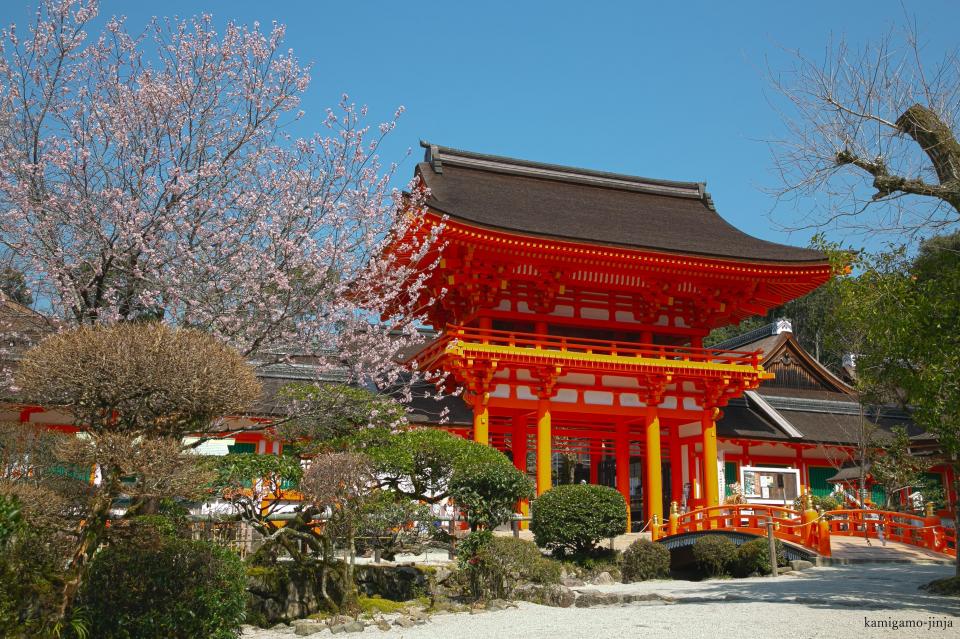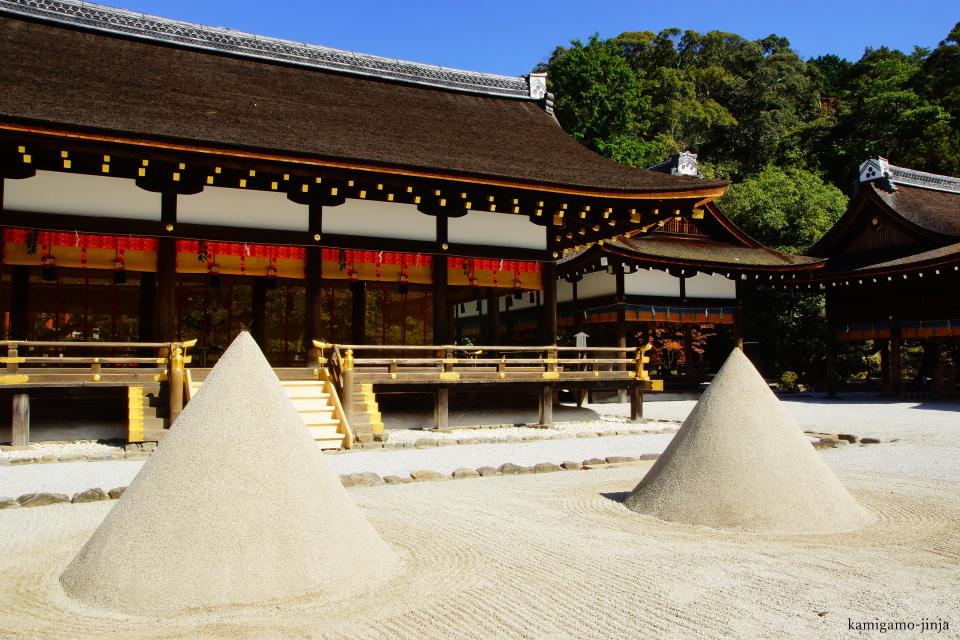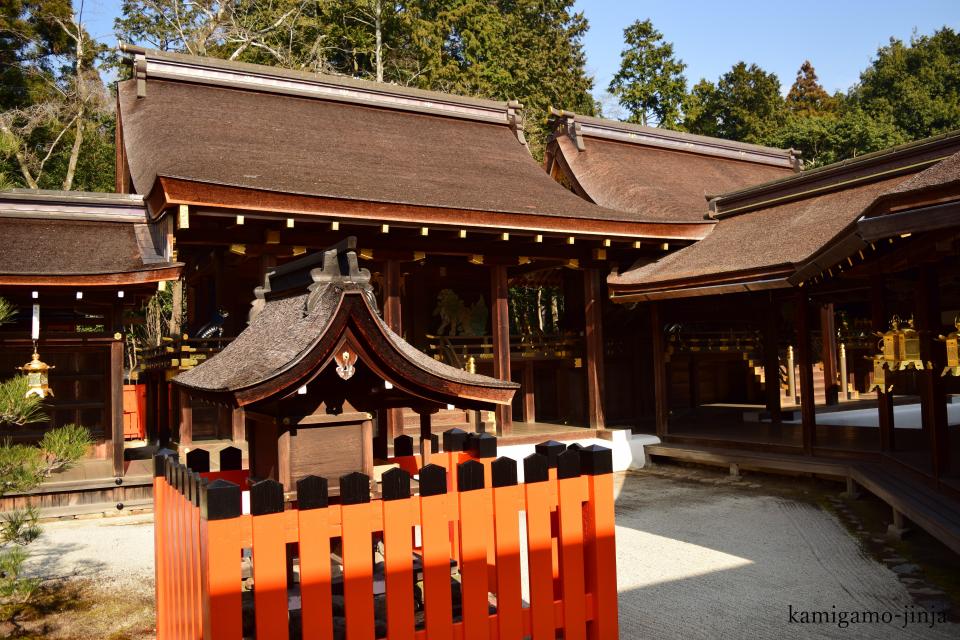This shrine, also named “Kamowakeikazuchi-jinja”, is one of the oldest shrines in Kyoto, dating back to the 7th century and predating the establishment of Heian-kyo (Kyoto).
A large orange torii (gate) marks the entrance to Kamigamo-jinja Shrine. Beyond it, a straight white path leads through a grassy field to another torii that stands before a large sacred grove. The path then enters a forest and leads to the shrine’s main hall which is situated at the confluence of two clear streams. Two white-sand mounds next to the main building are to serve as mountains for divinities to alight upon.
For more than 1300 years it has been the focus of ritual activity dedicated to Wakeikazuchi, a deity originally affiliated with the harvest, yet who in time came to be seen as the guardian of the capital city. Thus the rites at Kamigamo-jinja Shrine came to have significance for the preservation and upkeep of the capital, and by extension, the state.
An example is the annual Aoi Matsuri (Hollyhock Fetival), which features a long parade of people in costumes of different historical periods. The parade culminates at the shrine where the Emperor’s representative reads a message from the Emperor and stands in for him to pray. The Aoi Matsuri is one of the three major festivals in Kyoto and should not be missed.
Basic Information
- Address : 339 Motoyama, Kamigamo, Kita-ku, Kyoto City
- Website : Click here
- Access : Comfortable access to Kamigamo / Kitayama







